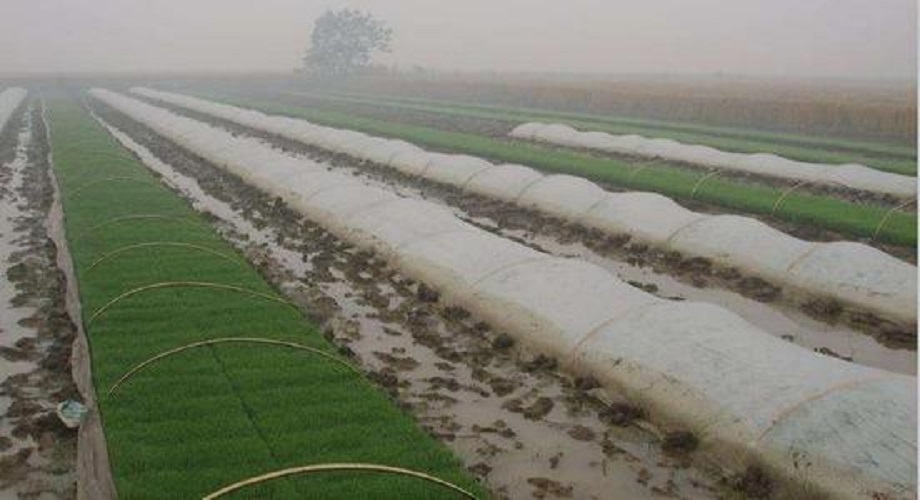
Non-Woven Industries Development. Nonwoven fabrics are a new product from the petrochemical and plastics industries following the introduction film. It weighs less than plastic cloth and provides better airflow. It is commonly employed in sanitary and medical items such as sanitary napkins, facial towels, and filters, etc., and was later designed and used in engineering. Non-woven fabrics are used in the production of vegetable products to shield against the effects of cold. Non-woven fabrics are produced differently from plastic film. However, the basic ingredients that are used in their production are similar. This includes PE (polyvinylchloride), EVA(Ethylene Vinyl Acetate Copolymer) EVA/polyethylene, as well as PVA/polyvinylether. You can make a thin film of traditional plastic by melting it and inflating. The film is continuous, and it can stretch to infinity. The film is completely porous. The film is impermeable and blocks any movement or exchange of molecules. Chemical fibers made from synthetic chemicals found in the mentioned sources became the favorite of the trade in textiles following the growth of the manufacturing industry. These chemical fibers are still used to make cloth by the traditional process of warp and weft weaving. Non-woven materials are created by intersecting the fibers on the same plane at different angles in all directions instead of traditional methods of warp and weft. It has superior material properties than traditional weaved fabrics. It can also be manufactured in a single process starting from raw materials and ending with finished products. This is a superior alternative to weaving which calls for drawing in fibers. In the past few years, nonwoven materials are increasingly used in the apparel business. Thanks to advances in material science as well as the advancement of production technology non-woven fabrics have become more versatile and is employed more frequently. Every day we come across different materials and products. The use of non-woven textiles in agriculture has increased mainly due to their lightness, the ease of production and their diversity. Follow this non woven landscape fabric for tips.

Non-woven textiles in agriculture: applications of non-woven fabrics used in agriculture. Non-woven fabric was first utilized in Europe to keep carrots safe for early harvesting. Also, to stop whiteflies and tomato leaf viruses Non-woven fabric was first introduced in Europe to the agricultural industry in the year 1978. Non-woven fabric can be utilized to mulch tomatoes, sweet peppers, and sweet potatoes and also root vegetables, carrots, the carrots. They also assist in the growth of other vegetables such as cabbage, lettuce, radishes, and lettuce. It is used to preserve the heat, encourage early harvesting and also to combat insects. Non-woven fabrics are typically used as surface covers for grass-proof mats. Short fibers are also utilized to make water-absorbing blankets that are sprayed on nursery beds to ensure that the roots will completely absorb any water. They also function as the bottom medium in the turf production process. They are utilized to plant large trees like the fruit trees as well as garden trees. In Taiwan along with the previously mentioned purposes non-woven fabric is utilized in crop protection. They are also extensively used to lower energy consumption in greenhouses with large areas. Canopy curtains, double-layered coverings and canopy curtains lower the radiation and heat loss in the evening. High-density spunbonded non-woven TAVIK fabrics were utilized in the early days to protect and shade cauliflower bulbs. Farmers quickly adopted it due to its excellent shading ability, low thermal conductivity, easy recyclability and easy acceptance. Then, it was used for the preservation of heat and insect-proof cultivation of leaf vegetables and the shade and heat preservation and cultivation of pineapples and fruit trees. The development of non-woven industries has been slow due to Taiwan's unique climate and ecology. Non-woven fabric manufacturers from Taiwan continue to research and develop non-woven technology. They are focusing on the absorption of water as well as air permeability of non-woven materials. It is being utilized to store and preserve agricultural product. Follow this agriculture non woven fabric for more info.
